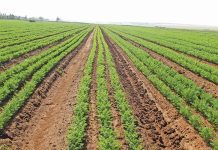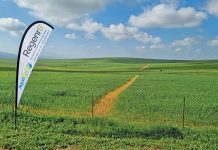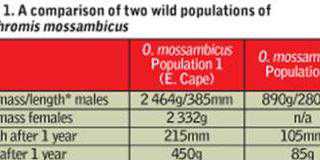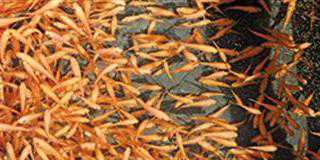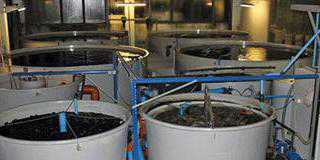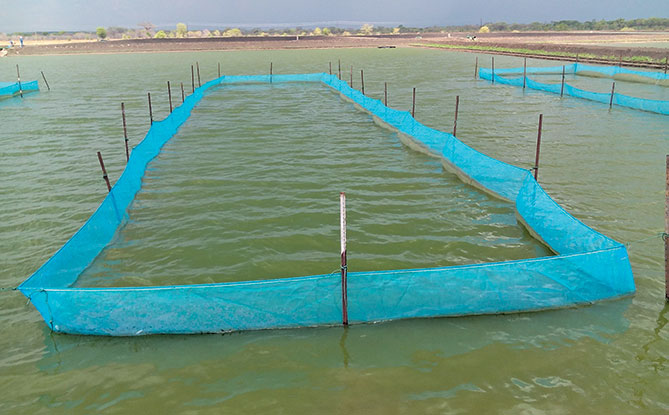
Photo: Nicholas James
Water is not only the foundation of life, it is itself a rich environment for life forms. Even perfectly clear, natural water is full of microscopic life, which forms the basis of the food chain, from minute animals and plants too small to see, up to the fish that we eat.
A glass of clean stream water, into which a lettuce leaf is placed and left in the sun, will soon be teeming with microscopic life. This is the essence of green water fish culture.
The typical recirculating aquaculture system is, by contrast, a sterile environment in which the fish are 100% dependent on artificial feed. Moreover, the high cost of artificial feed and energy are often barriers to the economic viability of such a system. Green water fish culture provides an alternative.
Unsuitable for intensive systems
The very high stocking rate of most intensive fish culture systems requires close attention to water chemistry, as the fish are completely dependent on their surrounding environment for their survival and growth.
READ Bass: an easy-to-breed alternative in aquaculture
Enrichment of water using manures or chemical fertilisers is impossible in these systems, as filtration will eliminate the enhanced nutrients. If nitrates rise to high levels, the enrichment causes algae blooms that reduce oxygen levels to near-critical levels at night.
This precludes the use of feed derived from ‘green water’ in such intensive systems.
Green water fish culture promotes not only the growth of microscopic life (zooplankton and phytoplankton), but the larger organisms that feed on these: insect larvae, aquatic worms, and aquatic crustaceans such as Daphnia and Cyclops.
These organisms, ranging from 2mm to 3mm (Daphnia) to 50mm (dragon fly larvae), serve as nutritious food for fish of all sizes.
Both enriched water and a suitable substrate are required for the growth of these nutrient-rich natural foods.
READ Cage culture for SA: small scale, big benefits
A smooth, impermeable plastic liner in a dam is inadequate: species diversity will be low and limited mainly to unicellular algae and microscopic zooplankton. This type of substrate works well enough for fry or fingerling-sized fish, but the microscopic organisms are too small to promote rapid growth of larger ones.
An earth pond with a soil or sandy substrate has spaces between the soil particles that provide suitable habitat for a more diverse community of organisms.
Many fish will feed naturally by probing the substrate for food organisms, even sucking in soil and extracting insect larvae, before expelling the non-edible part. Tilapia and carp typically feed in this way.
Fertilisation of (earth) pond water significantly reduces the cost of feed in fish culture, as well as producing better results. If tilapia fingerlings of 30mm in length are stocked in green water, which is effectively a ‘soup’ of feed, they will grow far faster than those dependent on even the best artificial feed in a sterile containment.
This eliminates the need for artificial feed for the first three months. To achieve the most rapid growth rate, supplemental feeding can then commence to augment the natural foods, resulting in healthy, robust fish at harvest.
A side benefit is that green water largely hides the fingerlings from birds and other predators.
Nicholas James is an ichthyologist and hatchery owner.

